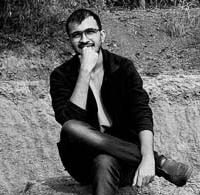How has your understanding of “improvisational practice” evolved over the course of this fellowship so far?
My training as an urbanist and urban geographer framed my stance in a particular way, namely that improvisational practice belongs to the grassroots, particularly to those ordinary people who are marginalized and forced to navigate their lives with limited resources. For example, from the cities of the global south, urban residents inhabit different urban infrastructures and repurpose such infrastructure for their own use. At the start of this Interseminars journey, I held the preconceived notion that the scope of improvisational practice in this context would be rooted in artistic practice, which differed from my intellectual inheritance of grassroots improvisation.
The fulcrum of Interseminars activities has profoundly evolved my understanding of improvisational practices. It has brought scholars from different disciplines together to create a collective space for learning, unlearning, intellectual contestations, and methodological experimentation. In the past, I used to divide my understanding of improvisation into distinct silos between research and practice. Contrarily, this Interseminars project contends that improvisational practice is a seamless integration of research, theory, and practices. By seamlessly integrating different intellectual perspectives on improvisational practices, we worked on creating interdisciplinary ground for engaging with the broader issues of social justice, asking how to intervene generatively in navigating contemporary world problems. Improvisational practice requires a specific structure, preparation, and planning.
How has the Interseminars initiative impacted the way you approach your research?
All the graduate Interseminars activity sessions have expanded my methodological imagination. This Interseminars exploration of “Improvise and Intervene” has allowed me to recognize the importance of academic knowledge productions, but also to be equally invested in other forms of knowledge generated in activism, artistic practice, political organizing, and everyday survival struggles. Such scholarly entanglements of different combinations of knowledge sources have enriched the critical scope of my doctoral project.
Our conveners, Maryam Kashani, Junaid Rana, and Eli Velásquez Estrada, have been committed to subverting the traditional hierarchy of graduate seminars. Their commitment to inverting the top-down approach of instructive decision-making helps to establish a horizontal communication channel that promotes collaborative productions. This practice made me realize that enterprise research always happens in networks operationalized through continuous changes. Consequently, improvisation has emerged as a conceptual framework that couches the dynamic vitality of our cohort’s varied and interconnected functioning.
The interdisciplinary methods seminar and activity process pushed my methodological abilities to embrace different mediums in knowledge production. The multimodal approach practiced in this seminar has resurfaced my interest in the production of video vlogging. At this moment, I am working to familiarize myself with GoPro camera technologies and considering using video vlogging as an ethnographic method for my research on India’s night streets.
Can you describe a group interaction or activity from Interseminars that has been particularly memorable?
The Interseminars group activity has been intellectually enriching. I can think of three group activities: multimodal methodological experimentations, analyzing three collectives of our choice, and searching for confluence in our individual graduate research projects. In terms of group interaction, “Finding Confluence” was the one memorable activity that helped me think through the collaborative aspect of the Interseminars project. It helped me deal with tough interdisciplinary questions, and this activity aimed to find a common thread among dissonant individual research polemics. These activities have produced a great deal of intellectual exchange and stories, and I look forward to participating in our upcoming methodological experimentation workshops.
How will you bring interdisciplinary collaboration into the next phase of your graduate school experience?
In the upcoming phase of graduate school, I will be working on my doctoral project on India’s emerging night geographies. Night studies as a research cluster are inherently interdisciplinary, with scholars from urban studies, sociology, geography, history, and anthropology sharing intellectual lineage. Following these lineages and my Interseminars experience, I aim to partner with night workers, think tanks, collectives, and state agencies to explore India’s emerging nightlife in a collaborative fashion. The Interseminars Initiative taught me how to respectfully establish channels for substantive collaborations with potential partners. It is worth mentioning that this Interseminars Initiative is equally committed to intervening in contemporary world challenges. My hunch is that any intervention should have a generative capacity in the face of constantly mutating world problems. As part of my doctoral project on India’s night workers, I am considering helping night workers to unionize and plan to produce a podcast series on their routine navigating experiences.
